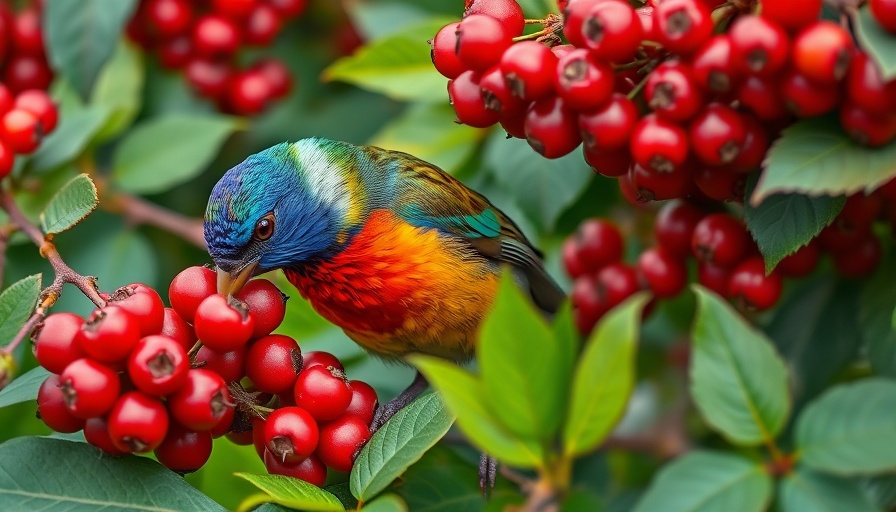
The Beauty of Native Gardening for Our Feathered Friends
Gardening is often seen simply as a leisure activity, yet it harbors the potential to significantly impact our local ecosystems, particularly for our feathered friends. Homegrown National Park co-founder Douglas Tallamy advocates for the incorporation of native plants into our gardens, emphasizing not only the beauty they bring but also their ecological importance. Native plants can create vibrant landscapes while serving as essential food sources for birds, minimizing the need for expensive birdseed.
Why Choose Native Plants?
Many still hold the misconception that native plants result in disorderly gardens. In reality, vibrant native species such as sunflowers and hollies not only enhance visual appeal but also attract a variety of birds. The majestic rose-breasted grosbeak, for example, is often drawn to gardens with native shrubs and flowers that provide shelter and sustenance. The colorful petals of native blooms offer nourishment for goldfinches and other local birds, creating a natural cycle of beauty and biodiversity.
Tips for Creating a Bird-Friendly Garden
Connecting with nature through gardening requires some thoughtful planning. Here are a few actionable insights to create an inviting environment for birds:
- Plant Diverse Native Species: A mix of flowering plants, shrubs, and trees can cater to different bird species and their unique needs. Consider adding creatures like elderberries and serviceberries—both are loved by birds and provide aesthetic appeal.
- Maintain a Chemical-Free Environment: To truly nourish your garden wildlife, avoid pesticides and herbicides that can decimate native insects—critical food sources for many bird species.
- Create Nesting and Feeding Areas: By integrating a variety of plants, you create a welcoming habitat where birds can thrive, nest, and feed.
Beyond Beauty: The Ecological Function of Native Plants
Growing native plants is more than just beautifying the landscape; they play pivotal roles in promoting biodiversity. Douglas Tallamy points out that native plants perform crucial ecological functions more effectively than non-native options. By supporting food chains that start from insects dependent on these plants, gardeners can foster healthier bird populations.
Environmental Impact and Future Gardening Trends
As we shift towards sustainable gardening practices, the move to native planting becomes paramount. By choosing native plants, we enable the recovery of local ecosystems while enjoying the aesthetic rewards of vibrant flowers and lush greenery. This trend not only aids local wildlife but also offers a fulfilling gardening experience for those who participate.
In conclusion, embracing native plants in our gardens is an act of love that yields beautiful landscapes while supporting avian life. Take a step towards promoting biodiversity in your backyard and enjoy the harmonious relationships that sprout when you coexist with nature.
 Add Row
Add Row  Add
Add 




Write A Comment